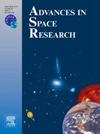Flood risk assessment in Ténès city (Algeria) using land cover based on machine learning methods and Pléiades tri-stereo images
IF 2.8
3区 地球科学
Q2 ASTRONOMY & ASTROPHYSICS
引用次数: 0
Abstract
On a global scale, a considerable amount of life, property, and resources are lost because of the increasing frequency and severity of flooding occurrences. This necessitates worldwide development, thorough flood risk assessments and urbanization policies. This work used sophisticated remote sensing data and hydraulic models to create an effective and appropriate methodology for flood risk assessment in a coastal city located in western Algeria. In the first stage, Sentinel-2 optical data was classified using deep learning and machine learning methods for land cover and land use (LULC). The CNN deep model based on LULC was selected for its outstanding overall accuracy. Then, a 1-D HEC-RAS hydraulic model was performed, integrating LULC maps with a higher precision, topography using a digital surface model (DSM) derived from Pléiades tri-stereo data, and another digital elevation model (12 m). Flood hydrographs were also constructed for four scenarios (10, 20, 50, and 100 years) using hydrometric data. The 1D flood model was indeed validated using a flood event data. Flood hazard, LULC and flood risk maps were derived. Results show the high flood hazard areas are concentrated on the left bank of the Oued Allala River and urban cities near the coast. According to the results of the flood hazard simulation of 100 years, built-up areas and roads are the LULC classes most affected by flood hazard, with more than 94.4 % and 69.34 % for DSM tri-stereo and DEM models, respectively. As well, results of flood risk assessment by combining hazard risk and LULC vulnerability show that for the DSM model, 0.48 %, 44.55 %, and 53.11 %, and 54.04 % of flooded areas are in low, medium, and high flood risk, respectively. For the DEM model, 3.14 %, 45 %, and 51.04 % of flooded areas are in low, medium, and high flood risk, respectively. Results confirmed that topographic resolution models and LULC accuracy of CNN models can highly affect hydraulic simulation output results. Based on the obtained results, Ténès City needs necessary planning for flood risk management, particularly in the coastal area. Derived maps can serve as valuable information for regional and national decision-making.
求助全文
约1分钟内获得全文
求助全文
来源期刊

Advances in Space Research
地学天文-地球科学综合
CiteScore
5.20
自引率
11.50%
发文量
800
审稿时长
5.8 months
期刊介绍:
The COSPAR publication Advances in Space Research (ASR) is an open journal covering all areas of space research including: space studies of the Earth''s surface, meteorology, climate, the Earth-Moon system, planets and small bodies of the solar system, upper atmospheres, ionospheres and magnetospheres of the Earth and planets including reference atmospheres, space plasmas in the solar system, astrophysics from space, materials sciences in space, fundamental physics in space, space debris, space weather, Earth observations of space phenomena, etc.
NB: Please note that manuscripts related to life sciences as related to space are no more accepted for submission to Advances in Space Research. Such manuscripts should now be submitted to the new COSPAR Journal Life Sciences in Space Research (LSSR).
All submissions are reviewed by two scientists in the field. COSPAR is an interdisciplinary scientific organization concerned with the progress of space research on an international scale. Operating under the rules of ICSU, COSPAR ignores political considerations and considers all questions solely from the scientific viewpoint.
 求助内容:
求助内容: 应助结果提醒方式:
应助结果提醒方式:


